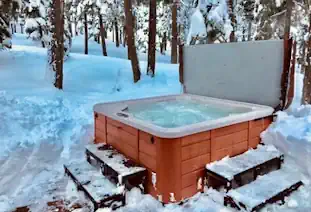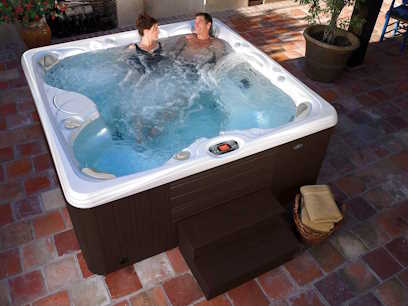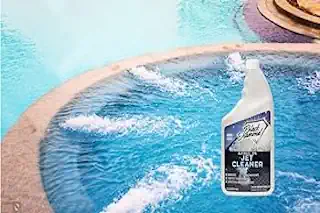A Beginners Guide to Hot Tub Chemicals: Ensuring a Safe and Enjoyable Soak
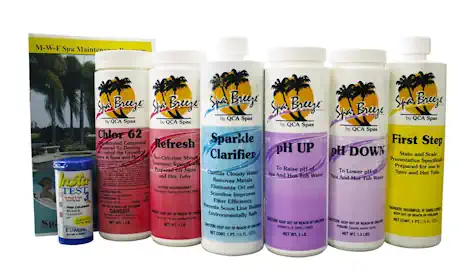
Hot tubs are a delightful addition to any home, providing relaxation and a touch of luxury. However, maintaining that pristine water quality requires more than just turning on the jets. Properly managing hot tub chemicals is crucial to ensure your spa remains a haven of comfort and cleanliness. Let’s dive into what you need to know to keep your hot tub in perfect condition.
Introduction to the Importance of Hot Tub Chemicals
Hot tub chemicals play a vital role in maintaining water hygiene and prolonging the life of your spa. They help to keep the water clear, safe, and free from harmful bacteria and algae. Without them, your spa or hot tub could quickly turn into a breeding ground for unwanted microorganisms, leading to health issues and unpleasant bathing experiences.
A Comprehensive Guide to Essential Hot Tub Chemicals
Chlorine vs. Bromine: Which is Best for You?
When it comes to sanitizing hot tub water, two primary chemicals come into play: chlorine and bromine. Each has its pros and cons:
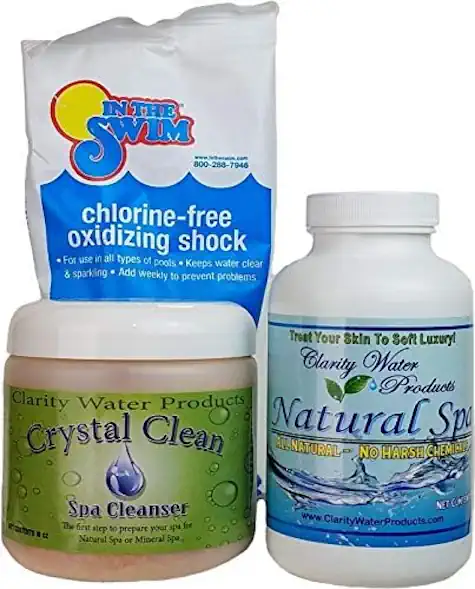
- Chlorine: This is a popular and cost-effective sanitizer. It acts quickly to kill bacteria and oxidize contaminants. However, chlorine can sometimes cause skin irritation and has a strong odor.
- Bromine: Ideal for hot tubs due to its stability at higher temperatures, bromine is less harsh on the skin and doesn’t produce a strong smell. It tends to be more expensive but is often preferred for its gentler effects.
Choosing between chlorine and bromine depends on your sensitivity to chemicals, budget, and personal preferences.
The Role of pH Balancers and Alkalinity Adjusters
Maintaining the right pH level is crucial for the effectiveness of your sanitizer and the comfort of your bathers. pH balancers and alkalinity adjusters ensure that your hot tub’s water is neither too acidic nor too basic:
- pH Balancers: These chemicals adjust the pH level of the water, keeping it within the ideal range of 7.2 to 7.8.
- Alkalinity Adjusters: Total Alkalinity (TA) acts as a buffer for pH, preventing drastic changes. Keeping TA within the range of 80-120 ppm helps maintain consistent pH levels.
Oxidizers: Keeping Your Hot Tubs Water Clean
Oxidizers, also known as shock treatments, break down organic contaminants that accumulate over time. This process helps to:
- Remove waste and residues from body oils, lotions, and other bathers’ contaminants.
- Restore clarity and improve sanitizer efficiency.
Specialty Chemicals for Unique Hot Tub Needs
Depending on your specific circumstances, you might need specialty chemicals such as:
- Calcium Hardness Increasers: To prevent corrosion of your hot tub components.
- Metal Sequestering Agents: To counteract high metal content in your water supply.
- Foam Reducers: To control and eliminate foam caused by soaps and lotions.
How to Properly Add Chemicals to Your Hot Tub
Adding chemicals to your hot tub is a straightforward process, but it requires attention to detail to ensure safety and effectiveness of spa chemicals. Here’s a step-by-step guide to help you:
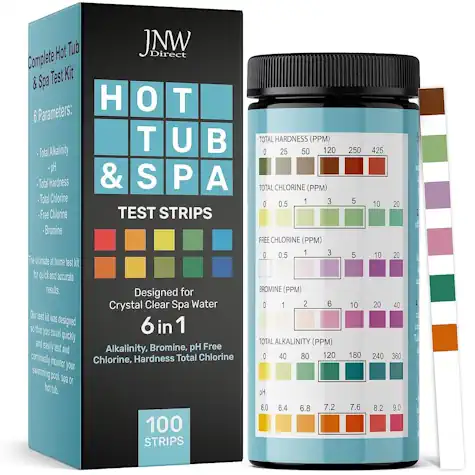
Step 1: Test the Water
Before adding any chemicals, test your hot tub water using test strips or a liquid test kit. This will provide information on current levels of pH, alkalinity, and sanitizer.
Step 2: Adjust pH and Alkalinity First
Start by balancing the pH and alkalinity of your water. Add the required amount of pH balancer or alkalinity adjuster, following the instructions on the manufacturer or product label. Run the jets for at least 30 minutes to ensure even distribution.
Step 3: Add Sanitizer
Once the pH and alkalinity are in balance, it’s time to add your sanitizer. Whether you’re using chlorine or bromine, follow the product’s directions carefully. Gradually add the sanitizer to the water, allowing it to dissolve completely. Running the jets can help to disperse the sanitizer more effectively.
We use a floating dispenser for adding bromine to our hot tub. It took a little experimenting to get the right settings but now it is super easy to maintain these levels. We only have to occasionally adjust for pH and alkalinity.
Step 4: Use an Oxidizer
Add an oxidizing agent (shock treatment) to cleanse the water of organic contaminants. It’s usually best to do this when the hot tub is not in use, as some shock treatments can produce strong odors. Follow the recommended dosage instructions and allow the jets to run for at least 15 minutes.
Step 5: Specialty Chemicals (If Needed)
If your water requires additional treatments, such as calcium hardness increases, metal sequestering agents, or foam reducers, add these chemicals last. Carefully follow the instructions on the packaging to achieve desired results.
Step 6: Wait Before Using the Hot Tub
After adding chemicals, it’s important to wait for a period recommended by the manufacturer—usually about 15-30 minutes—for the chemicals to circulate and take effect. Testing the water again before use ensures it’s safe and balanced.
By following these steps, you can maintain a clean, safe, and enjoyable hot tub experience. Regular monitoring and adjustment of chemical levels are key to prolonging the life of your spa and ensuring you enjoy a pleasant soak every time.
Best Practices for Using and Storing Hot Tub Chemicals
Safety Precautions and Handling Instructions
Working with chemicals requires care and attention. Here are some essential safety tips:
- Always read and follow the manufacturer’s instructions.
- Wear protective gear such as gloves and goggles.
- Never mix different chemicals; this can cause dangerous reactions.
- Add chemicals to water, not water to chemicals, to prevent splashing.
Tips for Effective Chemical Maintenance
Regular maintenance helps keep your hot tub ready for use:
- Test water chemistry at least once a week.
- Adjust chemical levels as needed to maintain optimal balance.
- Shock the water as testing indicates it is needed to break down contaminants.
Storage Guidelines to Prolong Chemical Effectiveness
Proper storage ensures that your chemicals remain effective:
- Store chemicals in a cool, dry place away from direct sunlight.
- Keep them out of reach of children and pets.
- Ensure containers are tightly sealed to prevent contamination.
Troubleshooting Common Hot Tub Water Issues with Chemical Solutions

Cloudy Water, Foam, and Other Visual Concerns
Cloudy water and foam can detract from your hot tub experience. Here’s how to address them:
- Cloudy Water: Often caused by imbalanced chemicals or inadequate filtration. Check pH, alkalinity, and sanitizer levels, and clean or replace filters.
- Foam: Usually results from soaps, lotions, and detergents. Use a foam reducer and encourage bathers to shower before entering the hot tub.
Addressing Unpleasant Odors in Your Hot Tub Water
Unpleasant odors typically indicate a buildup of contaminants. Regular shocking, maintaining proper sanitizer levels, and ensuring good ventilation can keep odors at bay.
Adding oils or aromatherapy agents can lead to slick surfaces, foam, cloudy water, and difficult chemical balancing issues. If you desire to add these items be sure to buy products specifically designed for use in a hot tub or spa and use them as directed or very sparingly. We added oils and it smelt nice for about a week and then we had to drain and clean our hot tub. In the end, it wasn’t worth the effort.
Preventing and Treating Algae Growth
Algae can be a persistent issue, especially in outdoor hot tubs. Maintain proper sanitizer levels, regularly shock the water, and use algaecides if necessary to keep algae growth under control.
The Environmental Impact of Hot Tub Chemicals and Eco-Friendly Alternatives
Discussion on the Disposal of Chemicals
Proper disposal of hot tub chemicals is crucial for environmental protection:
- Follow local regulations for disposing of chemical containers and unused products.
- Never pour chemicals down the drain or into natural water sources.
Introduction to Alternative Sanitizers and Cleaners
For those seeking greener options, consider these eco-friendly alternatives:
- Mineral Sanitizers: Use minerals like silver and copper to reduce the need for traditional sanitizers.
- Ozonators: Generate ozone to help sanitize the water naturally.
- UV-C Light: Use ultraviolet light to kill microorganisms without chemicals.
Conclusion: The Importance of Proper Chemical Maintenance for a Safe and Enjoyable Hot Tub Experience
Keeping your hot tub water clean and safe requires a balanced approach to chemical maintenance. By understanding and using the right chemicals, following the correct best practices for handling and storage, and addressing common water issues, you can ensure a relaxing and enjoyable experience every time you take a dip.
Frequently Asked Questions (FAQ)
How often should I test the water in my hot tub?
It is recommended to test the water at least once a week to maintain proper chemical balance. If the hot tub sees heavy use, you might need to test it more frequently.
Can I use household bleach instead of specialized chemicals?
Household bleach is not recommended for hot tubs as it can damage the equipment and surfaces. Always use chemicals specifically designed for hot tub maintenance.
What should I do if my hot tub water is still cloudy after treatment?
If the water remains cloudy, check the hot tub filter and clean or replace it if necessary. Ensure that your pH, alkalinity, and sanitizer levels are balanced. Also, consider using a clarifier to help clear up the water.
Are there any natural alternatives to traditional hot tub chemicals?
Yes, there are eco-friendly options such as mineral sanitizers, ozonators, and UV-C light systems that can reduce the need for traditional chemicals. These methods can be effective but may still require some level of traditional chemical maintenance.
How long should I wait before using the hot tub after adding chemicals?
Typically, you should wait about 15-30 minutes for the chemicals to circulate and take effect. However, always follow the manufacturer’s instructions for specific wait times.
Why does my hot tub have foam on the surface?
Foam can result from soaps, lotions, or detergents left on the skin and swimwear. Using a foam reducer and ensuring bathers shower before entering the hot tub can help prevent foam.
What are the signs that my hot tub needs shocking?
Indicators that your hot tub needs shocking include cloudy water, unpleasant odors, and difficulty maintaining sanitizer levels. Regularly shocking the water helps to break down organic contaminants.
How should I store my hot tub chemicals?
Store your chemicals in a cool, dry place away from direct sunlight. Ensure that they are out of reach of children and pets, and keep containers tightly sealed to prevent contamination.
Can I add essential oils or aromatherapy products to my hot tub?
Adding oils or aromatherapy agents can lead to slick surfaces, foam, and chemical balance issues. If you wish to use these products, choose those specifically designed for hot tubs and use them sparingly.
What should I do if I notice algae growth in my hot tub?
To address algae growth, maintain proper sanitizer levels, regularly shock the water, and consider using an algaecide if necessary. Ensure the filtration system is adequate for your use and schedule cleaning of the hot tub and surrounding areas on a more frequent basis.
By addressing these common questions, you can better understand and learn how to maintain your hot tub, ensuring a safe and pleasant experience every time you take a dip.

